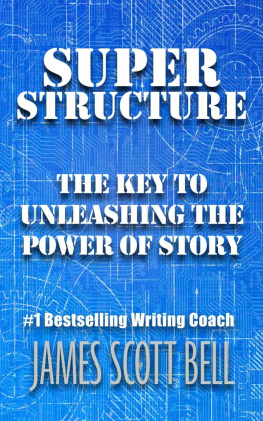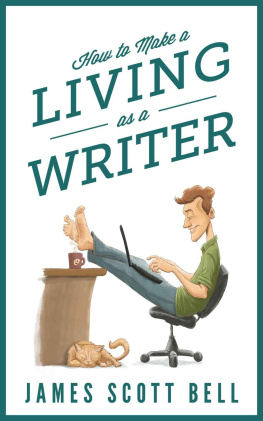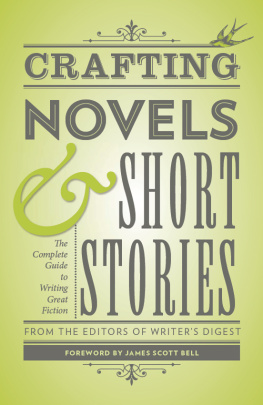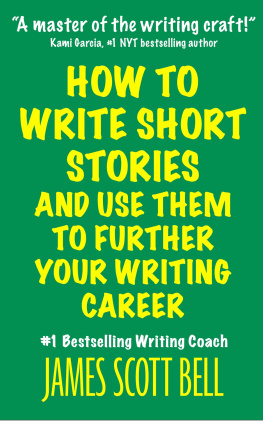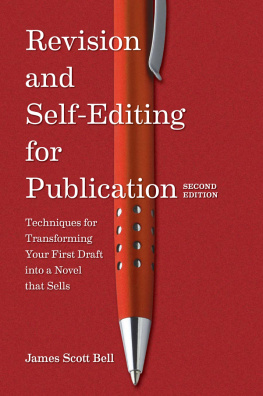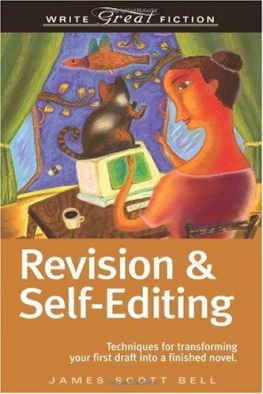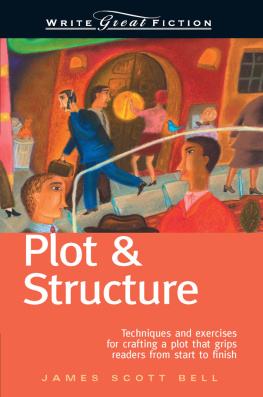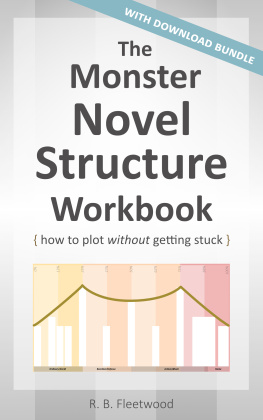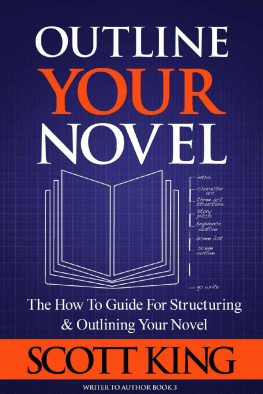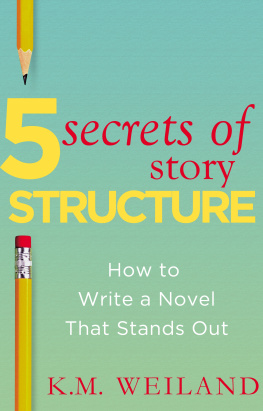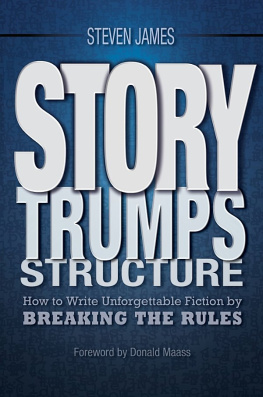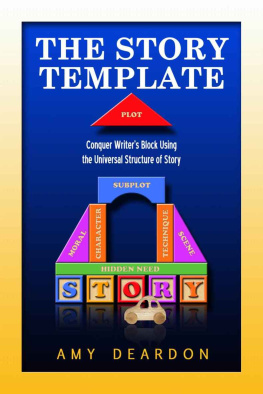CONTENTS
PART ONE: STRUCTURE LOVE
In Write Your Novel From the Middle, I provided a brief outline of Super Structure. This book fleshes out each of those steps, and provides tips and techniques for incorporating them into your own writing.
Ive found it necessary to write this book because of an odd meme that's popped up in recent years. It holds that structure is a vile inhibitor of creativity, that story always suffers under its tyrannyas if story was Spartacus and structure the slave master who whips him around all day. Poor Spartacus! He can't possibly write his novel under these conditions!
It's a misguided notion that, if swallowed whole, will virtually guarantee a writer a future of miserable returns on his efforts.
Of course, not all writers care about generating income. There's a guy at my local Starbucks who writes poems on a manual typewriter. He writes the pages and hands them out and hopes for enough tips to buy some coffee.
He seems happy enough. He never thinks about structure.
Then there is the writer who came to me once with a project that was a stinking mess. He protested that it was a labor of love and that there was some beautiful writing in it.
I agreed with him.
Then I told him no one is going to give a rip.
Because readers who pay money for fiction want to be hooked by a story. They want to get lost in it and care about the characters. They want to experience the tale emotionally, ride it out to the very end.
Which doesn't happen without structure.
As Exhibit A, I give you Dow Mossman.
Never heard of him? If you can find a DVD of the documentary The Stone Reader, hunt it down and watch it. It's about a writer of amazing natural gifts who could weave magic with his prose.
What he did not have was a handle on plot and structure, and therein lies the tragedy.
Dow Mossman wrote a novel called The Stones of Summer. It was published in 1972. It came out in hardcover with high hopes. It even got a favorable review in the New York Times.
But it tanked and quickly went out of print, destined to be forgotten.
Which is where the documentary comes in. I'll leave it to you to find out what happened. What interested me was this book. In conjunction with the movie, Barnes & Noble republished The Stones of Summer in a new, affordable hardcover edition. I bought it. I wanted to see if I'd missed a classic.
I will tell you this: Every page of that book is like some wild, Beat prose poem. There are word choices and metaphors and flights of literary fancy that delighted me.
For about two pages at a time.
Then my brain started to shut down. The wording was just too thick to sustain without something kind of crucial:
Structure.
And a skillfully woven plot.
The creativity and writing alone are simply not enough to sustain a satisfying reading experience.
Which is why the new edition of the book also tanked.
I say this with sympathy for the writer, who was obviously gifted with a genius for pure writing. He should have been a poet. Or come under the wing of an equally skilled editor who could have done for him what Max Perkins did for Thomas Wolfe.
What that editor would have taught Mr. Mossman is that the wonderful, amazing, vivid pictures and emotions in his mind needed to be given a form that would allow readers to share those things with him.
Translation Software
I call structure translation software for your imagination. Structure takes the story you have in your heart and mind and transforms it into a narrative that readers can fall in love with.
Structure is story's best friend. Structure holds story's hand and fights off the dangers of confusion, frustration, and consternation in readers.
Story without structure is like skin without skeleton. Oil without a crankcase and combustion engine. Abbott without Costello.
If you disregard structure, you are like a Portuguese tourist trying to order Russian food at a Taiwainese restaurant.
Structure unleashes the power of story.
On my group blog, The Kill Zone, a commenter revealed his own epiphany about this. It is worth sharing in full:
An aha! moment - my first fiction writing class seven years ago. Assignment - write a scene to be workshopped with classmates
I wrote a scene that was essentially autobiographical. An ER doc/ helicopter flight physician flew to an attempted resuscitation scene where a young woman (daughter/mother) had been found on the bottom of a pool. She could not be saved.
The patient's body was flown back to the hospital and the family contacted and told only to "go to the ER." The scene I wrote described the ER doctor going to the family room to notify loved ones of the death.
The "scene" I wrote involved the dead woman's mother, her 10-year-old son and their displays of incredible grief and courage (esp the 10 y.o).
I could not have read the scene I wrote aloud without breaking down.
The feedback from one of the 3 students who provided feedback was, "I didn't like that the ER doctor was so cold."
I was speechless.
That lesson has stayed with me ... what is in the author's heart/mind is meaningless if it is not communicated by the words on the page. The challenge is to make/allow the reader to experience the meaning and emotion by reading printed words. That is the magic trick.
I've been working hard at that ever since. I much appreciate your instruction in use of the tools that help create the magic.
Creating magic takes work, not just play. To connect with readers is a matter of both sides of your brain working in concert. Dont use just half your brain. Leave that to the politicians.
You want to move readers, weave a dream, and leave people glad they found your books.
Super Structure is going to help you do that.
Clearing Up a Few Misconceptions
Let me set aside some of the bad raps tossed at good old structure.
First of all, structure is not formulaic in the way critics use that term. They mean structure follows the numbers but has no real heart.
That's a false definition.
Consider: what makes something a formula:
It works.
Its been tested and proven to reliable.
If you go to a doctor and need a shot, you want him to give you what has been used over and over with success.
You don't want a doctor who says, So, I was playing around this morning with some baking soda, water, pepper and chicken entrails, and I'd like to see if that'll work for you. What do you say?
Um, excuse me?
Sure! I was being creative! Just going for it! I wasn't tied down to old-fashioned ideas and formulas. They tried to put that in my head in med school. Well, I'm a rebel. And I'm much happier now! Roll up your sleeve, please.
Right. You want the formula.
Dear Mr. Bell: I attended your Plot and Structure seminar in Sherman Oaks a few years ago. I was writing my first romance novel at that time. 3 more books down the road, I was nominated for the 2014 Golden Heart and signed a 2 book deal with Montlake Romance. These successes are largely due to following your plot and structure formula. You were right - formulas really do work. Thanks! - Shelly Chester Alexander
Another false argument is that structure always leads to cardboard characters and clichd plots.
Wrong.
In fact, when you use it right, structure creates plots that please and surprise, and are filled with unforgettable characters.
But structure stifles play! shout the skeptics.
No way. You start with your imagination and heart. You get fired up about telling a story because you have a plot idea (a what if?) or a character idea, or both, and you're jazzed about seeing what happens.

